Pablo M. Olmos
Instituto de Investigación Sanitaria Gregorio Marañón, Signal Processing Group
Explicit Density Approximation for Neural Implicit Samplers Using a Bernstein-Based Convex Divergence
Jun 05, 2025Abstract:Rank-based statistical metrics, such as the invariant statistical loss (ISL), have recently emerged as robust and practically effective tools for training implicit generative models. In this work, we introduce dual-ISL, a novel likelihood-free objective for training implicit generative models that interchanges the roles of the target and model distributions in the ISL framework, yielding a convex optimization problem in the space of model densities. We prove that the resulting rank-based discrepancy $d_K$ is i) continuous under weak convergence and with respect to the $L^1$ norm, and ii) convex in its first argument-properties not shared by classical divergences such as KL or Wasserstein distances. Building on this, we develop a theoretical framework that interprets $d_K$ as an $L^2$-projection of the density ratio $q = p/\tilde p$ onto a Bernstein polynomial basis, from which we derive exact bounds on the truncation error, precise convergence rates, and a closed-form expression for the truncated density approximation. We further extend our analysis to the multivariate setting via random one-dimensional projections, defining a sliced dual-ISL divergence that retains both convexity and continuity. We empirically show that these theoretical advantages translate into practical ones. Specifically, across several benchmarks dual-ISL converges more rapidly, delivers markedly smoother and more stable training, and more effectively prevents mode collapse than classical ISL and other leading implicit generative methods-while also providing an explicit density approximation.
A Foundation Model for Patient Behavior Monitoring and Suicide Detection
Mar 19, 2025Abstract:Foundation models (FMs) have achieved remarkable success across various domains, yet their adoption in healthcare remains limited. While significant advances have been made in medical imaging, genetic biomarkers, and time series from electronic health records, the potential of FMs for patient behavior monitoring through wearable devices remains underexplored. These datasets are inherently heterogeneous, multisource, and often exhibit high rates of missing data, posing unique challenges. This paper introduces a novel FM based on a modified vector quantized variational autoencoder (VQ-VAE), specifically designed to process real-world data from wearable devices. We demonstrate that our pretrained FM, trained on a broad cohort of psychiatric patients, performs downstream tasks via its latent representation without fine-tuning on a held-out cohort of suicidal patients. To illustrate this, we develop a probabilistic change-point detection algorithm for suicide detection and demonstrate the FM's effectiveness in predicting emotional states. Our results show that the discrete latent structure of the VQ-VAE outperforms a state-of-the-art Informer architecture in unsupervised suicide detection, while matching its performance in supervised emotion prediction when the latent dimensionality is increased, though at the cost of reduced unsupervised accuracy. This trade-off highlights the need for future FMs to integrate hybrid discrete-continuous structures for balanced performance across tasks.
Multi-View Oriented GPLVM: Expressiveness and Efficiency
Feb 12, 2025



Abstract:The multi-view Gaussian process latent variable model (MV-GPLVM) aims to learn a unified representation from multi-view data but is hindered by challenges such as limited kernel expressiveness and low computational efficiency. To overcome these issues, we first introduce a new duality between the spectral density and the kernel function. By modeling the spectral density with a bivariate Gaussian mixture, we then derive a generic and expressive kernel termed Next-Gen Spectral Mixture (NG-SM) for MV-GPLVMs. To address the inherent computational inefficiency of the NG-SM kernel, we propose a random Fourier feature approximation. Combined with a tailored reparameterization trick, this approximation enables scalable variational inference for both the model and the unified latent representations. Numerical evaluations across a diverse range of multi-view datasets demonstrate that our proposed method consistently outperforms state-of-the-art models in learning meaningful latent representations.
Transformer Vibration Forecasting for Advancing Rail Safety and Maintenance 4.0
Jan 20, 2025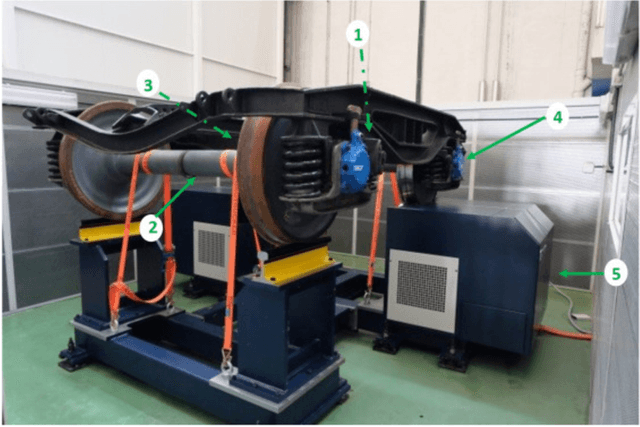
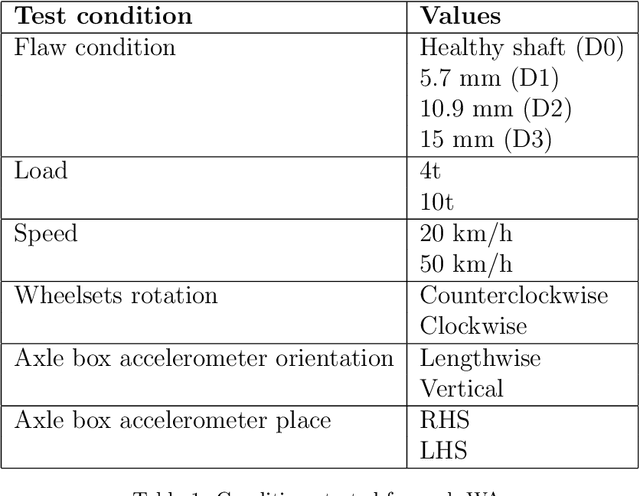
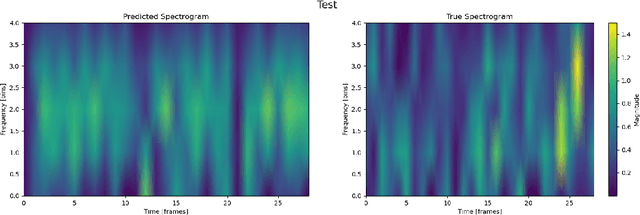
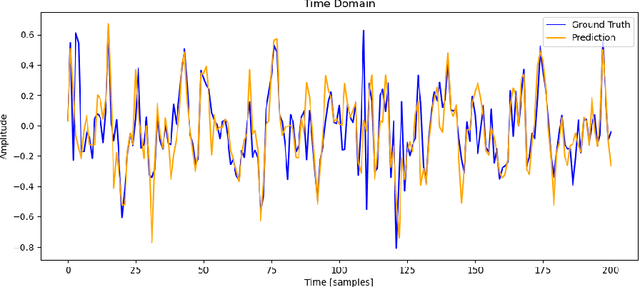
Abstract:Maintaining railway axles is critical to preventing severe accidents and financial losses. The railway industry is increasingly interested in advanced condition monitoring techniques to enhance safety and efficiency, moving beyond traditional periodic inspections toward Maintenance 4.0. This study introduces a robust Deep Autoregressive solution that integrates seamlessly with existing systems to avert mechanical failures. Our approach simulates and predicts vibration signals under various conditions and fault scenarios, improving dataset robustness for more effective detection systems. These systems can alert maintenance needs, preventing accidents preemptively. We use experimental vibration signals from accelerometers on train axles. Our primary contributions include a transformer model, ShaftFormer, designed for processing time series data, and an alternative model incorporating spectral methods and enhanced observation models. Simulating vibration signals under diverse conditions mitigates the high cost of obtaining experimental signals for all scenarios. Given the non-stationary nature of railway vibration signals, influenced by speed and load changes, our models address these complexities, offering a powerful tool for predictive maintenance in the rail industry.
Scalable Random Feature Latent Variable Models
Oct 23, 2024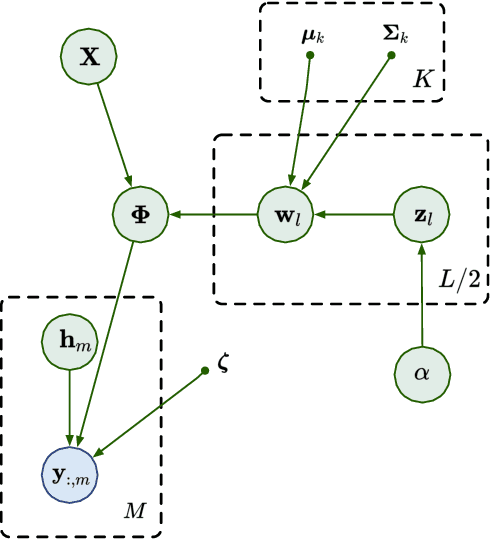



Abstract:Random feature latent variable models (RFLVMs) represent the state-of-the-art in latent variable models, capable of handling non-Gaussian likelihoods and effectively uncovering patterns in high-dimensional data. However, their heavy reliance on Monte Carlo sampling results in scalability issues which makes it difficult to use these models for datasets with a massive number of observations. To scale up RFLVMs, we turn to the optimization-based variational Bayesian inference (VBI) algorithm which is known for its scalability compared to sampling-based methods. However, implementing VBI for RFLVMs poses challenges, such as the lack of explicit probability distribution functions (PDFs) for the Dirichlet process (DP) in the kernel learning component, and the incompatibility of existing VBI algorithms with RFLVMs. To address these issues, we introduce a stick-breaking construction for DP to obtain an explicit PDF and a novel VBI algorithm called ``block coordinate descent variational inference" (BCD-VI). This enables the development of a scalable version of RFLVMs, or in short, SRFLVM. Our proposed method shows scalability, computational efficiency, superior performance in generating informative latent representations and the ability of imputing missing data across various real-world datasets, outperforming state-of-the-art competitors.
Protect Before Generate: Error Correcting Codes within Discrete Deep Generative Models
Oct 10, 2024



Abstract:Despite significant advancements in deep probabilistic models, learning low-dimensional discrete latent representations remains a challenging task. In this paper, we introduce a novel method that enhances variational inference in discrete latent variable models by leveraging Error Correcting Codes (ECCs) to introduce redundancy in the latent representations. This redundancy is then exploited by the variational posterior to yield more accurate estimates, thereby narrowing the variational gap. Inspired by ECCs commonly used in digital communications and data storage, we demonstrate proof-of-concept using a Discrete Variational Autoencoder (DVAE) with binary latent variables and block repetition codes. We further extend this idea to a hierarchical structure based on polar codes, where certain latent bits are more robustly protected. Our method improves generation quality, data reconstruction, and uncertainty calibration compared to the uncoded DVAE, even when trained with tighter bounds such as the Importance Weighted Autoencoder (IWAE) objective. In particular, we demonstrate superior performance on MNIST, FMNIST, CIFAR10, and Tiny ImageNet datasets. The general approach of integrating ECCs into variational inference is compatible with existing techniques to boost variational inference, such as importance sampling or Hamiltonian Monte Carlo. We also outline the key properties ECCs must have to effectively enhance discrete variational inference.
Alzheimer's disease detection in PSG signals
Apr 04, 2024Abstract:Alzheimer's disease (AD) and sleep disorders exhibit a close association, where disruptions in sleep patterns often precede the onset of Mild Cognitive Impairment (MCI) and early-stage AD. This study delves into the potential of utilizing sleep-related electroencephalography (EEG) signals acquired through polysomnography (PSG) for the early detection of AD. Our primary focus is on exploring semi-supervised Deep Learning techniques for the classification of EEG signals due to the clinical scenario characterized by the limited data availability. The methodology entails testing and comparing the performance of semi-supervised SMATE and TapNet models, benchmarked against the supervised XCM model, and unsupervised Hidden Markov Models (HMMs). The study highlights the significance of spatial and temporal analysis capabilities, conducting independent analyses of each sleep stage. Results demonstrate the effectiveness of SMATE in leveraging limited labeled data, achieving stable metrics across all sleep stages, and reaching 90% accuracy in its supervised form. Comparative analyses reveal SMATE's superior performance over TapNet and HMM, while XCM excels in supervised scenarios with an accuracy range of 92 - 94%. These findings underscore the potential of semi-supervised models in early AD detection, particularly in overcoming the challenges associated with the scarcity of labeled data. Ablation tests affirm the critical role of spatio-temporal feature extraction in semi-supervised predictive performance, and t-SNE visualizations validate the model's proficiency in distinguishing AD patterns. Overall, this research contributes to the advancement of AD detection through innovative Deep Learning approaches, highlighting the crucial role of semi-supervised learning in addressing data limitations.
Training Implicit Generative Models via an Invariant Statistical Loss
Feb 26, 2024



Abstract:Implicit generative models have the capability to learn arbitrary complex data distributions. On the downside, training requires telling apart real data from artificially-generated ones using adversarial discriminators, leading to unstable training and mode-dropping issues. As reported by Zahee et al. (2017), even in the one-dimensional (1D) case, training a generative adversarial network (GAN) is challenging and often suboptimal. In this work, we develop a discriminator-free method for training one-dimensional (1D) generative implicit models and subsequently expand this method to accommodate multivariate cases. Our loss function is a discrepancy measure between a suitably chosen transformation of the model samples and a uniform distribution; hence, it is invariant with respect to the true distribution of the data. We first formulate our method for 1D random variables, providing an effective solution for approximate reparameterization of arbitrary complex distributions. Then, we consider the temporal setting (both univariate and multivariate), in which we model the conditional distribution of each sample given the history of the process. We demonstrate through numerical simulations that this new method yields promising results, successfully learning true distributions in a variety of scenarios and mitigating some of the well-known problems that state-of-the-art implicit methods present.
Efficient local linearity regularization to overcome catastrophic overfitting
Jan 21, 2024Abstract:Catastrophic overfitting (CO) in single-step adversarial training (AT) results in abrupt drops in the adversarial test accuracy (even down to 0%). For models trained with multi-step AT, it has been observed that the loss function behaves locally linearly with respect to the input, this is however lost in single-step AT. To address CO in single-step AT, several methods have been proposed to enforce local linearity of the loss via regularization. However, these regularization terms considerably slow down training due to Double Backpropagation. Instead, in this work, we introduce a regularization term, called ELLE, to mitigate CO effectively and efficiently in classical AT evaluations, as well as some more difficult regimes, e.g., large adversarial perturbations and long training schedules. Our regularization term can be theoretically linked to curvature of the loss function and is computationally cheaper than previous methods by avoiding Double Backpropagation. Our thorough experimental validation demonstrates that our work does not suffer from CO, even in challenging settings where previous works suffer from it. We also notice that adapting our regularization parameter during training (ELLE-A) greatly improves the performance, specially in large $\epsilon$ setups. Our implementation is available in https://github.com/LIONS-EPFL/ELLE .
Interpretable Spectral Variational AutoEncoder (ISVAE) for time series clustering
Oct 18, 2023Abstract:The best encoding is the one that is interpretable in nature. In this work, we introduce a novel model that incorporates an interpretable bottleneck-termed the Filter Bank (FB)-at the outset of a Variational Autoencoder (VAE). This arrangement compels the VAE to attend on the most informative segments of the input signal, fostering the learning of a novel encoding ${f_0}$ which boasts enhanced interpretability and clusterability over traditional latent spaces. By deliberately constraining the VAE with this FB, we intentionally constrict its capacity to access broad input domain information, promoting the development of an encoding that is discernible, separable, and of reduced dimensionality. The evolutionary learning trajectory of ${f_0}$ further manifests as a dynamic hierarchical tree, offering profound insights into cluster similarities. Additionally, for handling intricate data configurations, we propose a tailored decoder structure that is symmetrically aligned with FB's architecture. Empirical evaluations highlight the superior efficacy of ISVAE, which compares favorably to state-of-the-art results in clustering metrics across real-world datasets.
 Add to Chrome
Add to Chrome Add to Firefox
Add to Firefox Add to Edge
Add to Edge